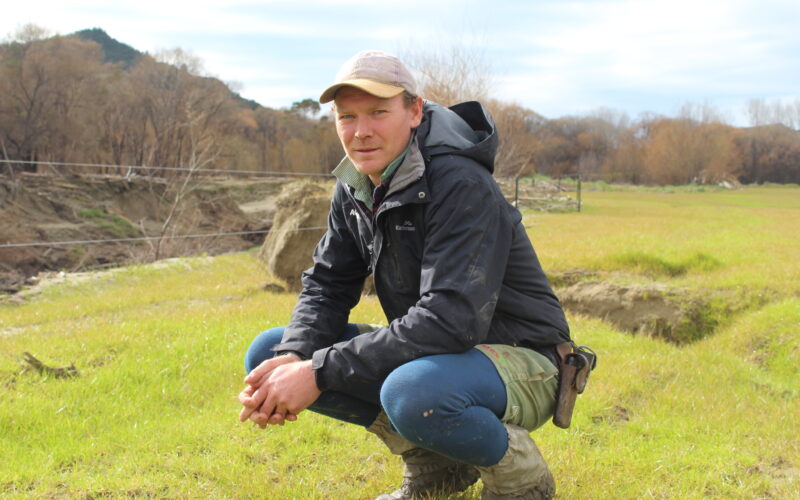Tim Jefferd is testing his agronomy skills.
Cyclone Gabrielle deposited silt of varying depths on about 120ha of prime, fertile flats on the family’s two Tolaga Bay livestock and cropping farms.
Mechanical removal was not an option and in places the silt was too deep to work into the topsoil, but using skills acquired from working in the seed and fertiliser industries, Jefferd believed there could other options.
His parents Bruce and Nicki endured Cyclone Bola and Jefferd has complemented their knowledge by tapping into advice from professionals to develop a plan that he hopes will reduce the disruption but also turn adversity into opportunity.
Where the silt is sandy and the depth is shallow, he lightly worked it and in two paddocks has sown the perennial variety, Reason AR37, on which he is lambing ewes, although he has had to apply fertiliser.
In paddocks with deeper silt cover he is planning to introduce lucerne or red clover in spring – deep rooting plants that will tap into nutrients in the now-buried topsoil.
“The sandy texture of the silt will have no rooting depth limitations and these paddocks will dry out faster, therefore will be well suited to lucerne,” Jefferd said.
The farm is summer dry and together with increased drench resistance these forages could be of assistance while also providing new grazing management options.
Ultimately the nutrient value of these crops will dictate any future role.
Fertility testing of the silt-covered paddocks reveals pH has lifted from an average of six to eight, Olsen P has fallen from 24 to five or six, and potassium has fallen from 14 to six.
Destroyed fences are being realigned with new structures that are two or three wire with wide-spaced waratahs or posts, so when the next flood comes they are less vulnerable and less of a barrier for slash and debris.
After a horror two years, the impending arrival of their second child and the start of lambing are providing Tim and wife Lucy with a milestone as they restart their farming career.
“We’re looking ahead.”
The family lost about 20ha of corn and about half their 40ha maize crop to flood waters and silting.
They only finished harvesting maize in the first week of August, once ground conditions had dried.
Jefferd said the disaster has not dampened his energy and enthusiasm but he admitted that could change if the farms are once again inundated with another deluge of water and slash.
The response from friends, associates and strangers who have donated fencing equipment and baleage and boosted morale with phone calls and visits has been invaluable, but Jefferd said what his region really needs is restored infrastructure and a solution to the slash issue.
Without reliable roads, services and communication, he said he fears farmers will struggle to attract staff, especially those with families, which will undermine communities.
Forestry companies have provided heavy machinery and drivers to clear up the slash, but they are not admitting full liability and have been unwilling to discuss the cost of the lost production.
Meanwhile the community knows there is further slash sitting in the headwaters ready to be washed downstream.






